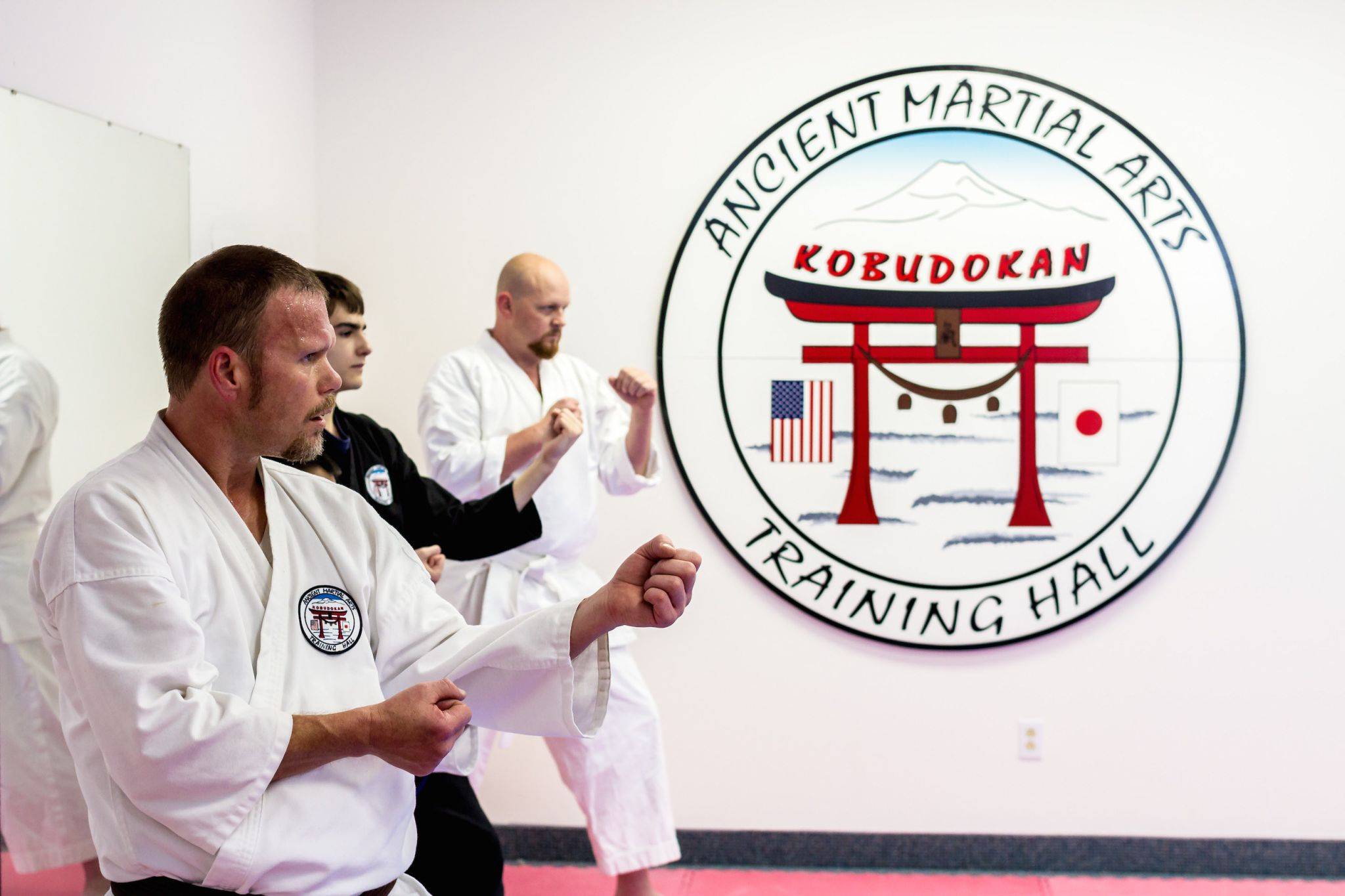The Kobudokan, currently located on Philo in the Sunny Crest Mall, has been in the Champaign-Urbana area since 1988. For years, the dojo was led by Professor Art Beier, who began studying Judo in the 1960s, and Sensei Michael Kleppin, who has been with the Kobudokan since its inception. But this year, long-time instructor Sal Belahi is taking over the business, which has been at the center of fitness and self-defense in this area for decades. A few weeks ago, I chatted with Sal about the Kobudokan’s approach to teaching martial arts.
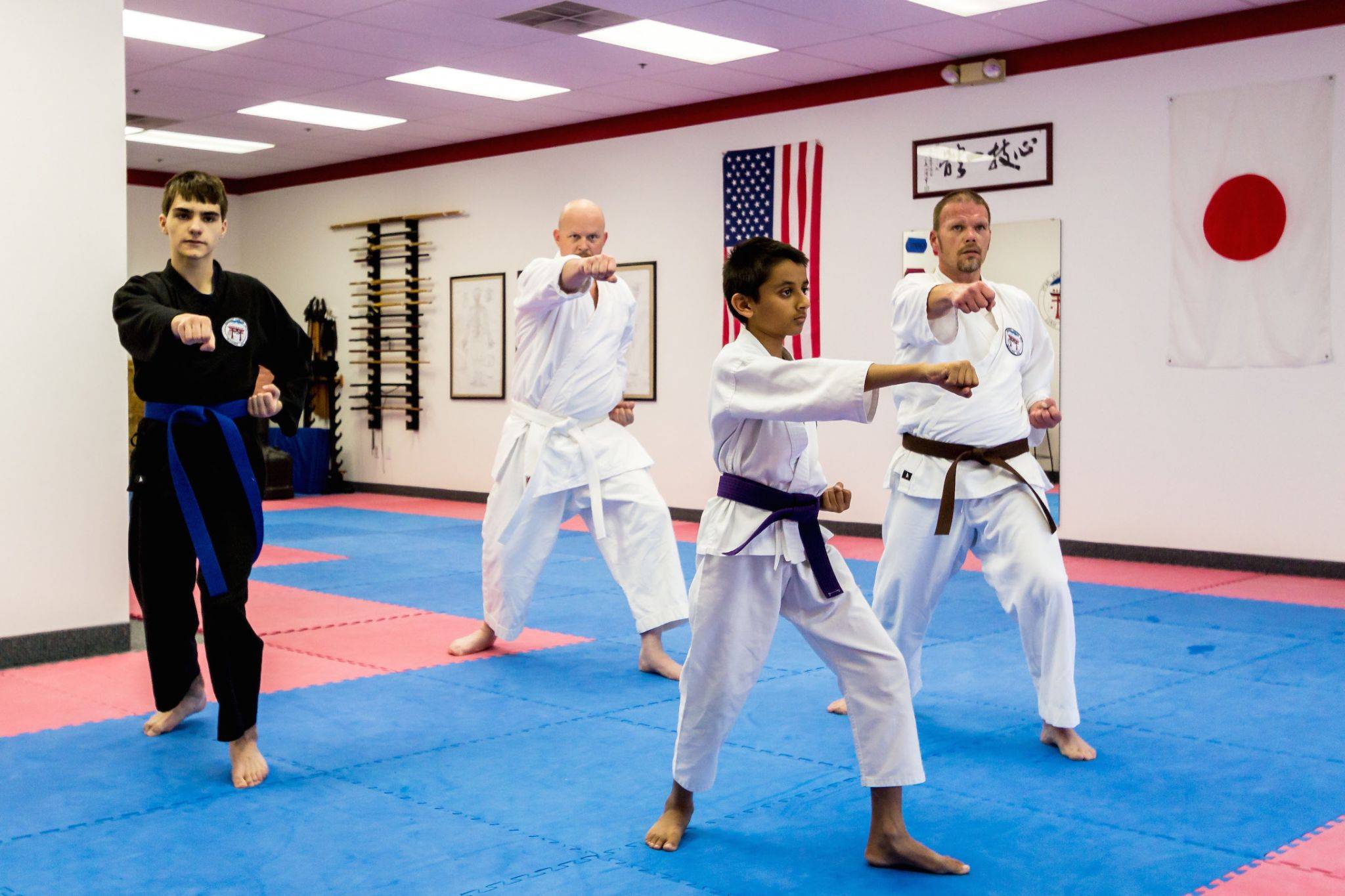
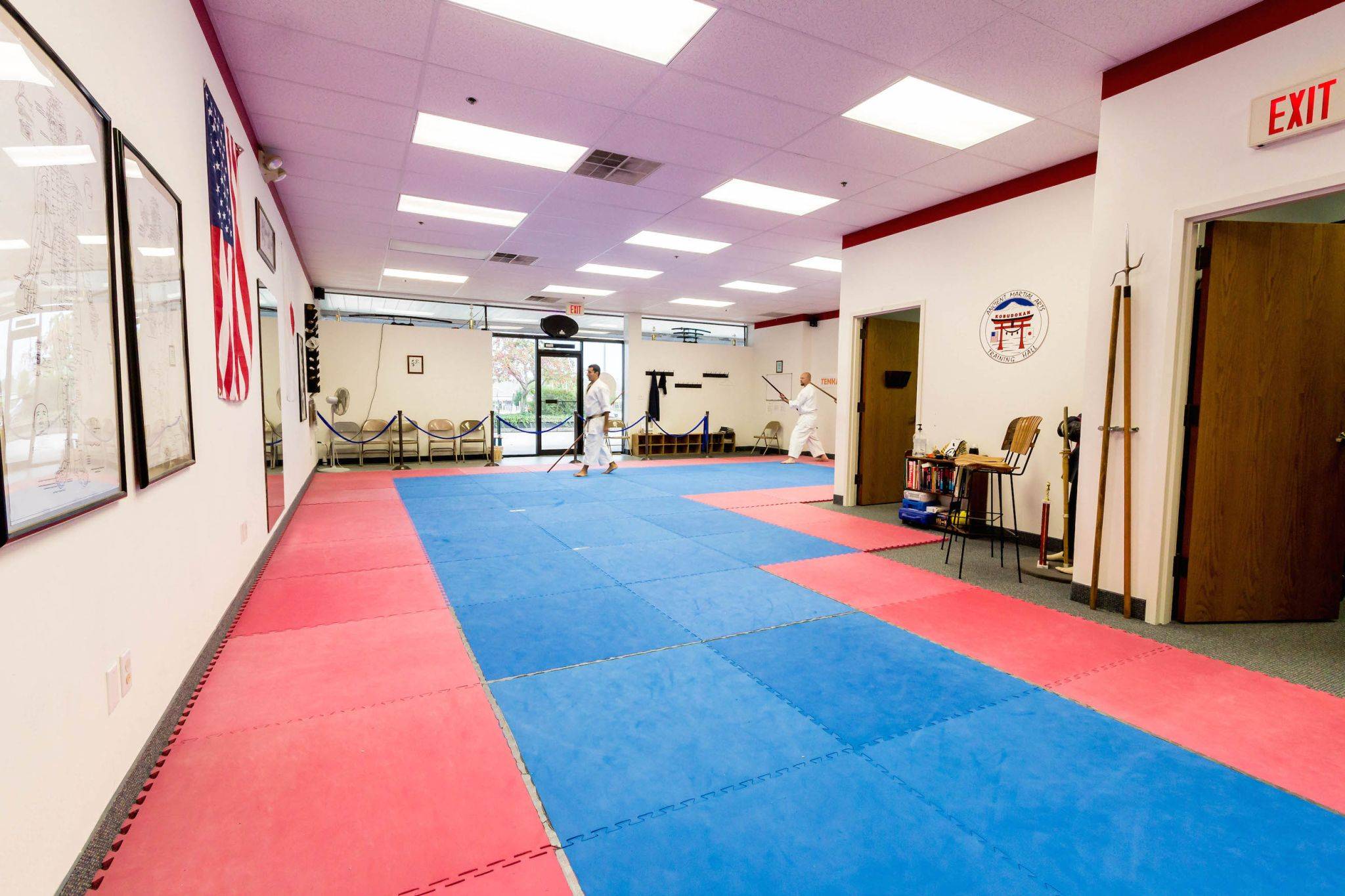
The Kobudokan is small, brightly lit, and full to the brim with swords, throwing darts, and other weapons. The walls of the room show diagrams of pressure points in the human body and medals from martial arts competitions.
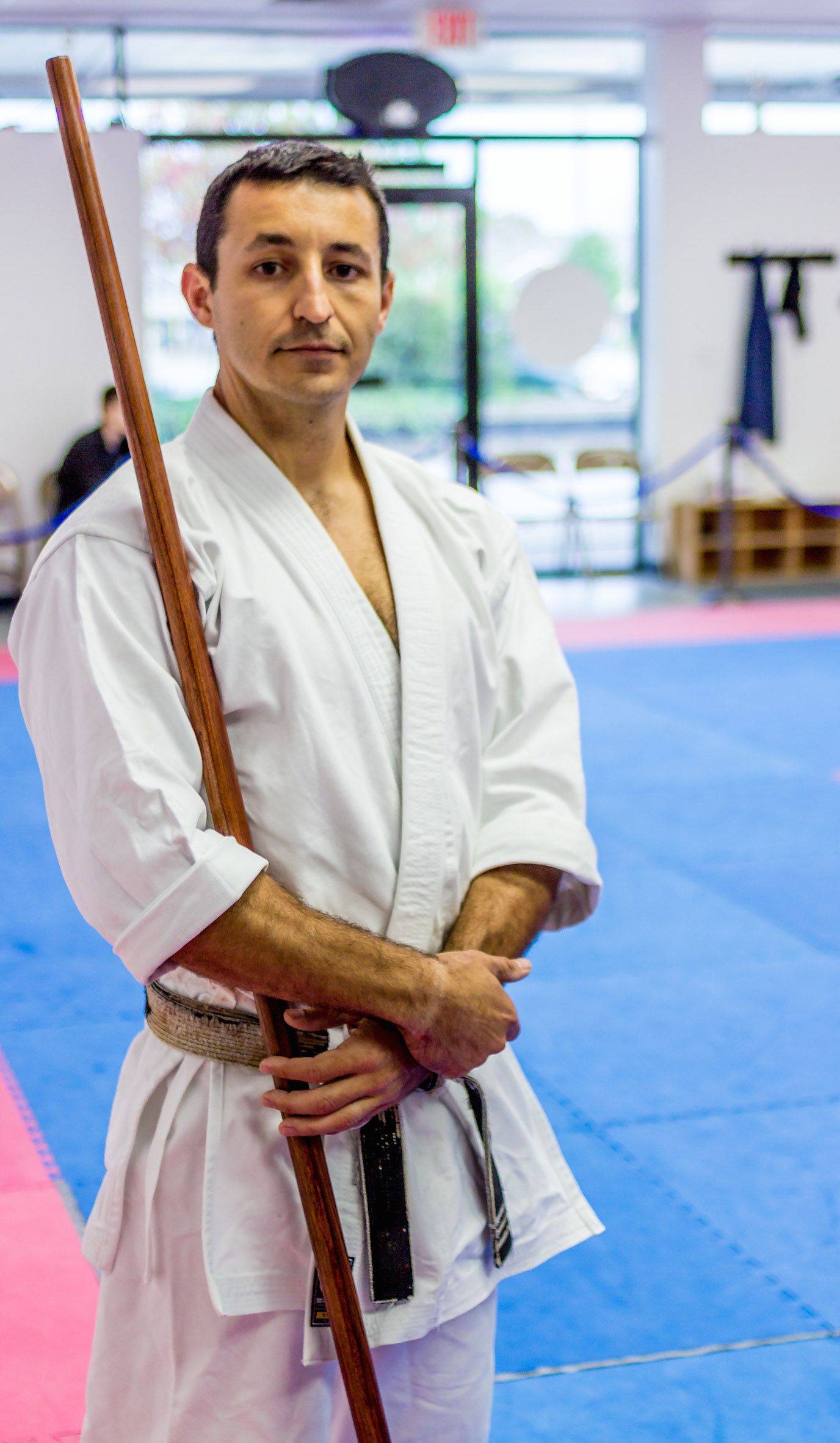
When I walked in the dojo, Sal was casually tossing around a bow staff.
Sal began studying martial arts since he was in his teens, when he first began taking classes in Florida. After relocating to the Champaign-Urbana area in 2001, he joined the Kobudokan, where he currently teaches karate and kobudo.
He told me that the level of the instructors’ expertise, as well as the intimate class sizes, kept him coming back.
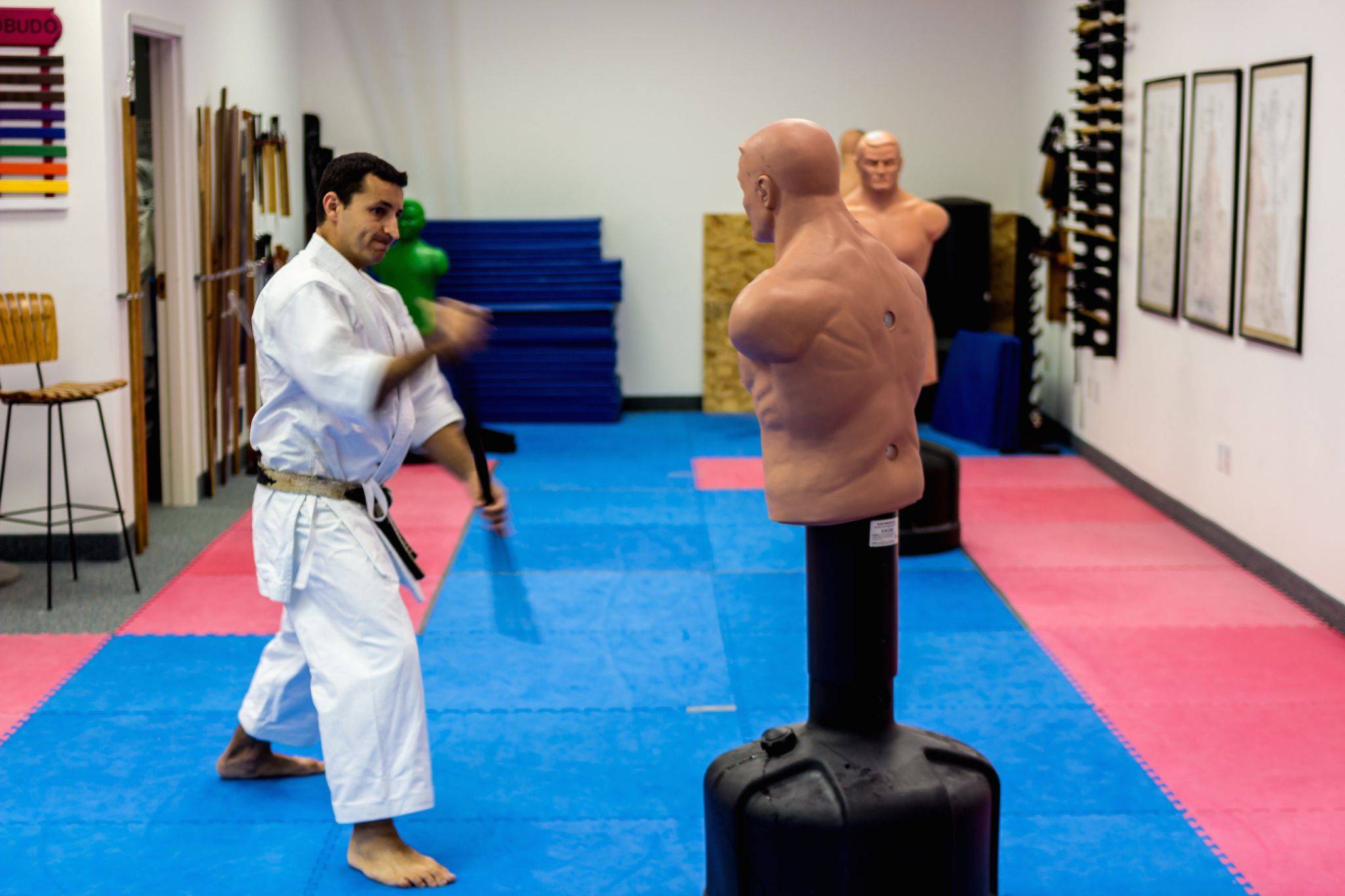
“Class sizes are fairly small here,” said Sal. “Across all the six arts we offer, we probably have 35 students or so. That’s been the case since I came here.”
The small class sizes make the Kobudokan unique. “In some fitness classes,” Sal said, “you’re basically just a number. You don’t get a lot of one-on-one time with the teacher to ask questions. But the teaching here is very intimate. So even if we had a sudden boom of students, we would keep the class sizes small.”
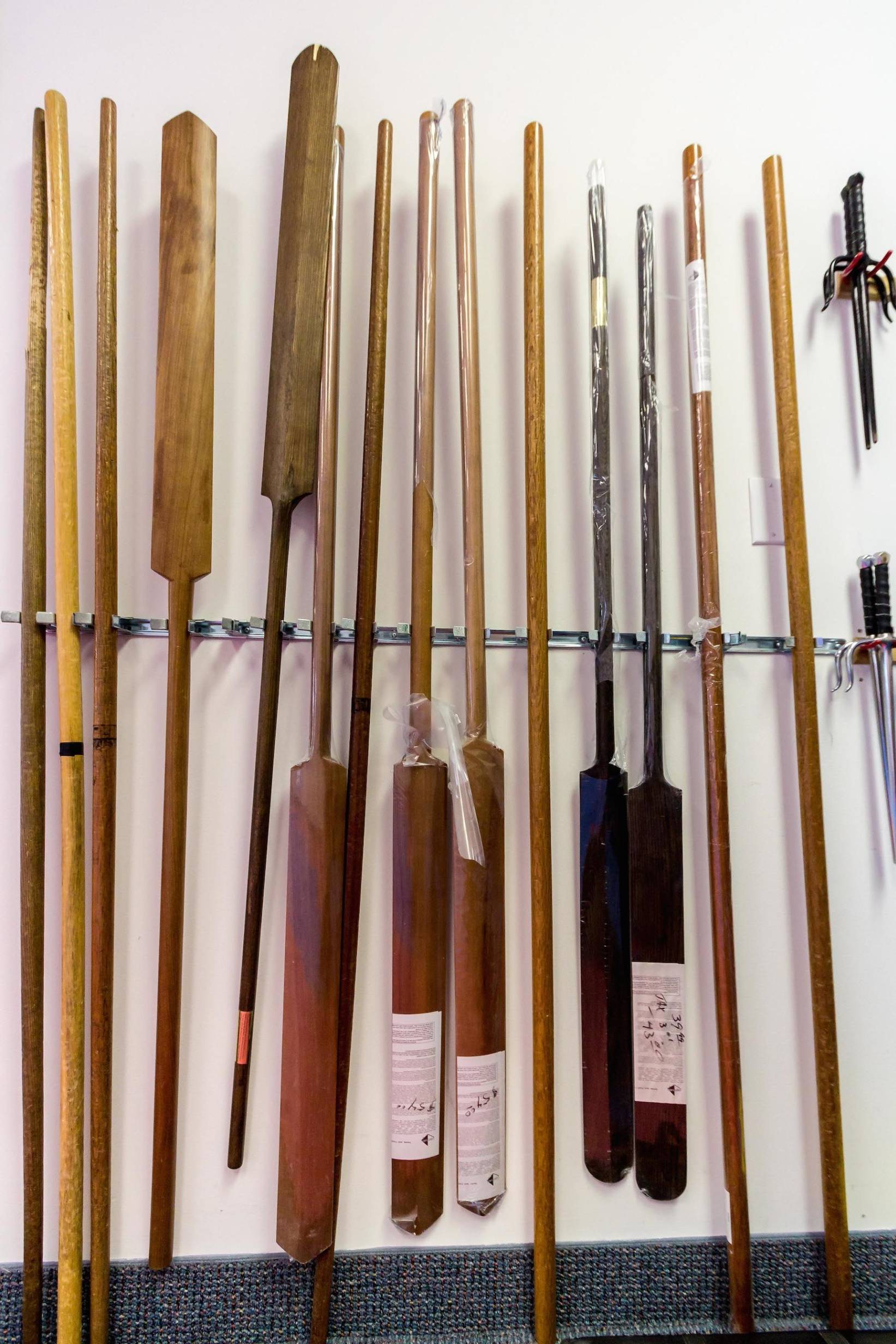
That atmosphere creates a cross-generational experience in many of the classes. “Right now, in my karate class,” said Sal, “I have students in their fifties alongside students as young as seven. And they all take the same class. Working with an adult gives them more of a sense of the dangers that can happen out there. It helps them think about how to prepare for real situations.”
According to Sal, simulating realistic self-defense scenarios is an important part of the Kobudokan’s philosophy.
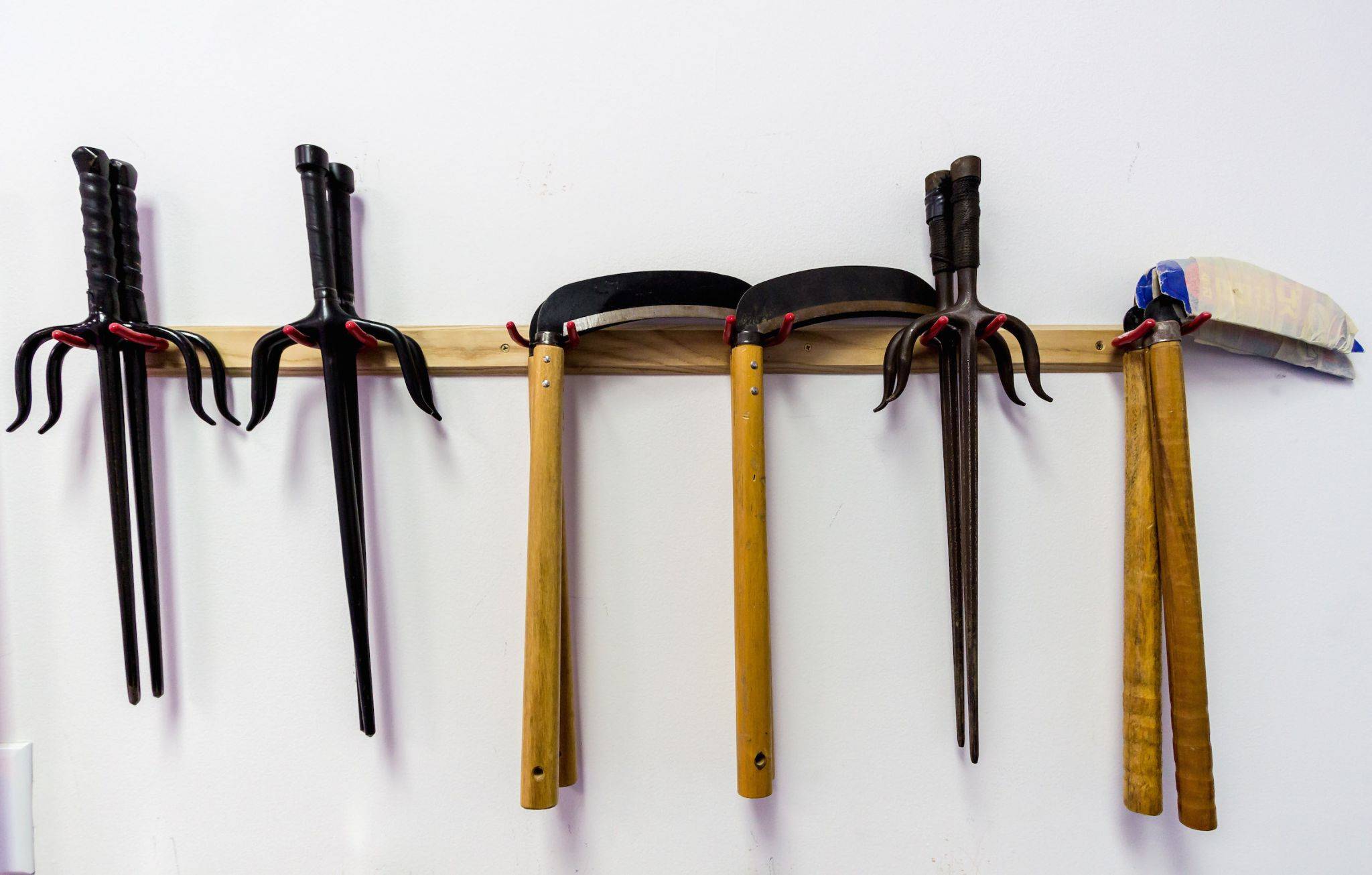
“Students start martial arts for all kinds of reasons. To have a hobby, for fitness, for health, for safety, and many other reasons. But I always teach my classes for realistic self-defense because I want them to take what they learn in here and, God forbid, apply it to a realistic situation. I don’t want them to walk out of here with an unrealistic sense of security. If we’re working outlandish self-defense scenarios in here that would never happen out there in a million years, then I’m doing them a disservice.”
Sal said that many instructors at the Kobudokan consider real-world scenarios when structuring their classes.
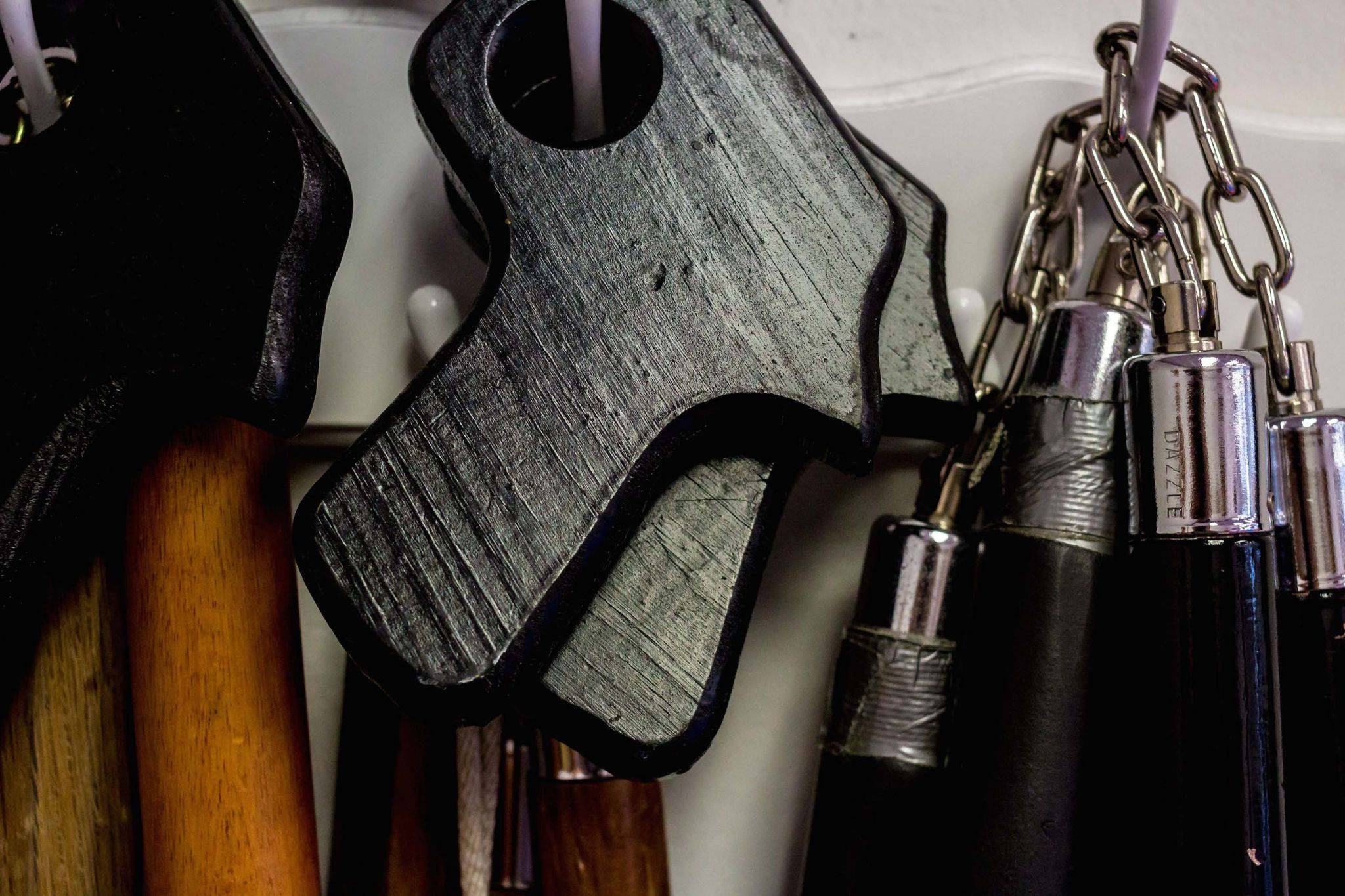
“When we do partner work in various classes, we do it with the mindset that it’s not two martial arts students fighting each other, but one martial arts student fighting an Average Joe. So when I have a karate student attack another student, I don’t want them to attack them like a karate student, but with realistic techniques. No one on the street is going to attack you with a Jump Spinning Crescent Kick. It’s just not going to happen. They might try to grab your wrists and pull you, or use big shoves. We try to look at the ways that people respond to stimulus when natural confrontation occurs. There are typically angry words exchanged before the distance is even closed. We talk about all of those aspects of confrontation and how to handle them. The stuff that we teach here is for when there’s no other option.”
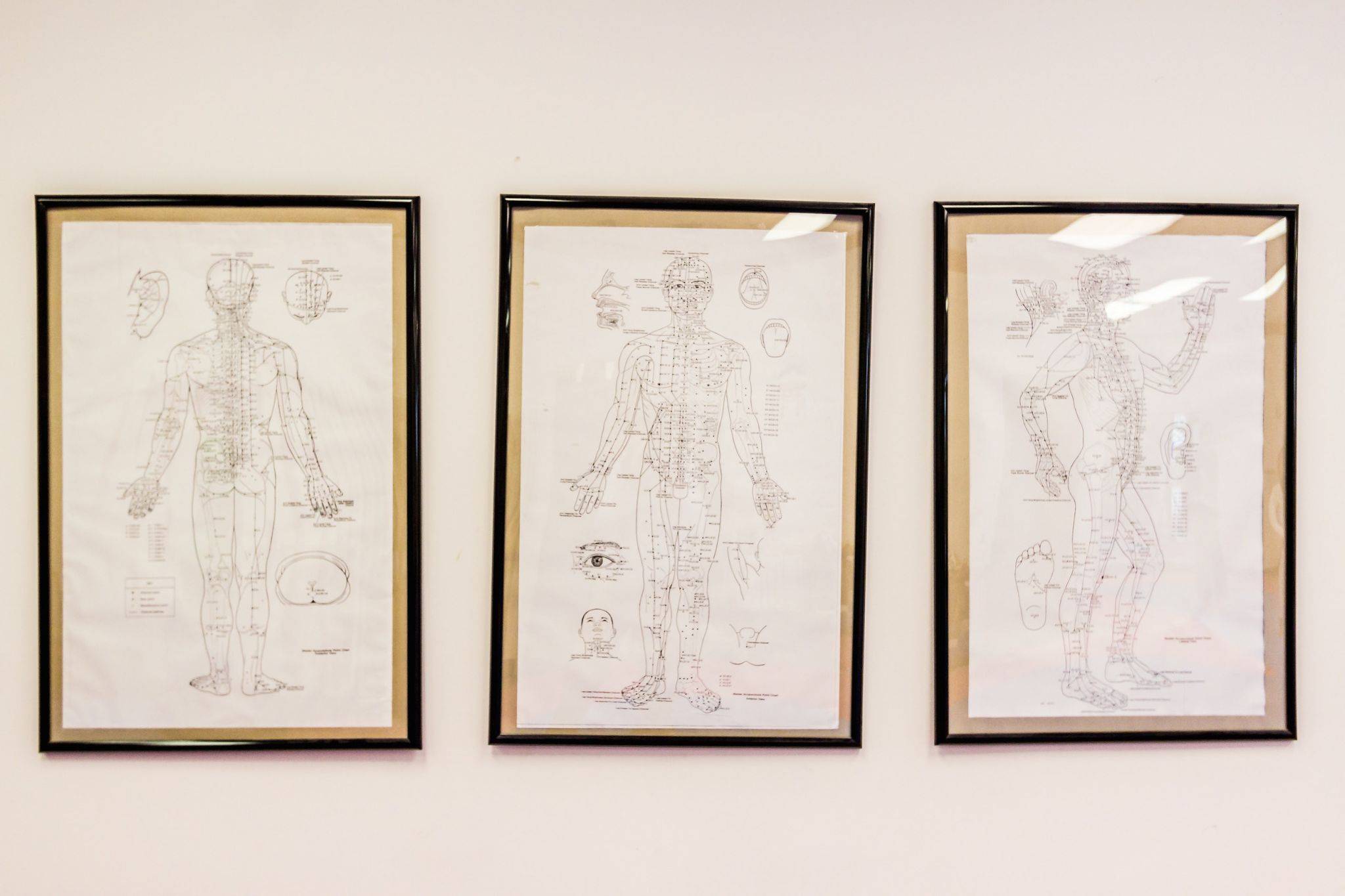
The experiences of instructors Michael Kleppin and Art Beier helps inform the Kobudokan’s philosophy of realistic self-defense. Kleppin has studied martial arts for decades and traveled to Japan to deepen his knowledge, and Beier is a retired law enforcement officer, which, according to Sal, helps students think about self-defense holistically.
“Professor Beier sometimes talks about his past experiences. One scenario that he sometimes brings up is when someone tries to attack you with a knife. If you take that knife and attack that person, you’re probably going to jail because you’re now the aggressor. To understand how to protect yourself, you also have to understand how the law works. You have to understand what level of aggression is appropriate for the scenario.”
Of course, not all of the techniques from martial arts classes can translate to the real world. As Sal pointed out, “You might argue that no one is walking down Green Street with a sword strapped to his belt, and that’s true.”
But martial arts can help people understand how they would react under worst-case scenarios.
“There are all kinds of things that apply to self-defense, whether it’s your awareness, your calmness, your ability to focus, fitness, or things like that,” said Sal. “Those are all things that factor into your ability to defend yourself. Of course, no one can anticipate how a person is going to react under stress. It’s difficult to recreate that in here, but we try to do drills where we can create those scenarios so people know how their bodies would react.”
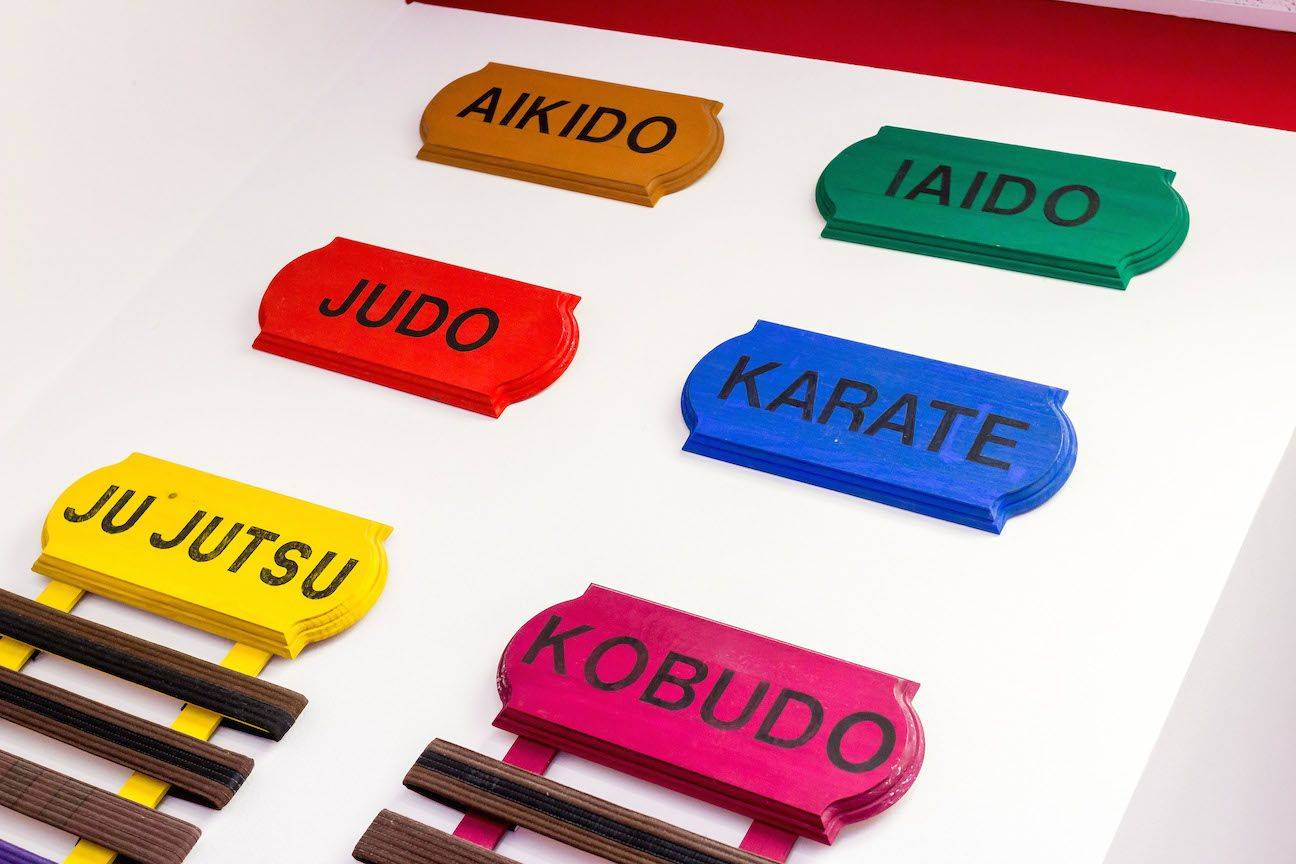
The Kobudokan offers instruction in six martial arts: Iaido, Aikido, Karate, Kobudo, Judo, and Ju jutsu. Here’s how Sal explained the differences between them:
- Iaido – “The particular style of Iaido that we teach comes from an 800-year-old sword art. It’s not a battlefield sword art, so it doesn’t involve lots of clashing of swords. It’s based on the types of situations a samurai would have encountered in his daily life, like sitting in a teahouse and getting attacked. Much of the practice that they do in those classes begins in a kneeling position.”
- Aikido – “I like to think of Aikido as a more gentle art. If you compare aikido to karate, you’ll see there’s no punching or kicking. It’s basically using an opponent’s force against him. You redirect the opponent’s force to turn his energy back against him so that when he’s punching you, you’re avoiding it by turning away and his force carries him forward. It’s a little bit more relaxed than karate.”
- Karate – “I could go on for hours about karate because it’s the main art that I do. It obviously involves kicking and punching, and there’s the stereotype that that’s all it is. People see us kicking and punching and they think it’s a very percussive art. But in fact, we spend most of our time in karate classes in joint locks, grappling, pressure point work, and things like that. We spend a lot of time working on kata, which are basically predetermined patterns—series of locks, punches, and kicks. These kata have been handed down for centuries. They’re a kind of oral tradition, because these forms weren’t written down. So one kata contains the knowledge of a particular teacher. You can think of the kata as a textbook. You take that knowledge, learn from it, and apply it in your own ways. People take sequences of kata and work with a partner to explore its different techniques.”
- Kobudo – “Kobudo is the sister art to karate. It has a romantic story behind it. In the 1600s, Japan invaded Okinawa. They told the people of Okinawa that they couldn’t have any weapons and couldn’t be involved in any military practice. So there’s this romantic idea that the peasants and farmers turned to their agricultural tools to fend off the evil samurai who were invading them. And there’s a little bit of truth to that idea, but not a whole lot. There are several major weapons in Kobudo, including the bow, the scythe, a shield and dagger, and nunchaku, or nunchucks, as people know them. Part of studying a weapon art is studying the anthropology of how a society lived and how they used these tools. If you study this art, you learn that some of these tools had agricultural origins and some were used by law enforcement. You can look at black and white pictures of what the local law enforcement in Okinawa looked like at that time, and you’ll see them standing there with their bow or scythe.”
- Judo – “Judo was founded in the 1800s. Like Karate, it was brought to the US following World War II. It’s an Olympic sport; it’s basically a lot of throwing, falling, and groundwork. There’s no throwing or kicking. It’s all based on throwing your opponent to the ground and accumulating points through doing so. Judo means the “gentle art,” which is kind of ironic because it’s anything but. In judo, you hit the mat very, very hard. We actually have a number of women in our judo class who really enjoy it because you learn how to exploit the physical weaknesses of a person’s structure. For example, how to offset someone’s balance, even when they might be much bigger than you. So many women enjoy taking it because it teaches them how to fight with someone who might be much larger than they are. Even a very small woman can toss a very big guy, which looks odd because it seems physically impossible. You learn how to do throws that don’t require much strength, but just a little knowledge of physics.”
- Ju jutsu – “Ju jutsu is related to judo. There are more locks in ju jutsu. It’s kind of the older version of judo, and judo turned the practices of ju jutsu into sport.”
———
Sal told me that at some point, the Kobudokan might consider expanding to a larger location, but for the moment they’re enjoying the close-knit community that their current space affords.
Photos courtesy of Sam Logan.








